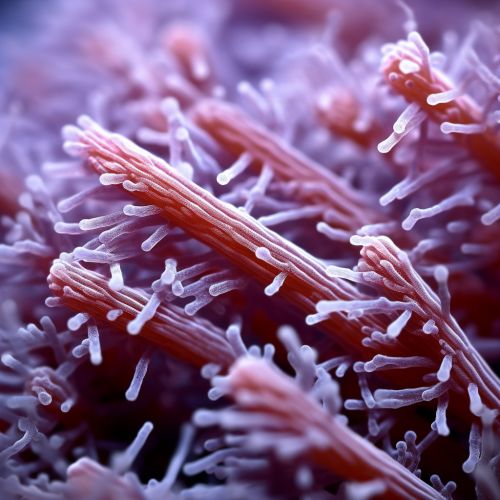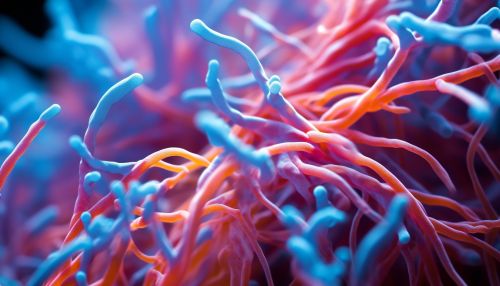Bacilli
Introduction
Bacilli are a type of bacterial form that represents one of the many diverse shapes and structures of bacterial cells. The term "bacillus" (plural "bacilli") is derived from the Latin word for "stick," as these cells often appear rod-like or cylindrical in shape. Bacilli are found in many different environments, including soil, water, and the human body, and they play crucial roles in various biological processes.
Morphology
Bacilli are characterized by their rod-like shape, which is typically longer than it is wide. This shape is a result of the way the bacterial cell wall grows during cell division. The cell wall of bacilli contains peptidoglycan, a complex polymer that gives the cell its shape and rigidity. The amount and structure of peptidoglycan can vary among different species of bacilli, leading to differences in cell shape and size.


Classification
Bacilli belong to the domain Bacteria, and they can be classified in several ways. One common method is based on their response to the Gram stain, a laboratory technique that distinguishes between two major types of bacteria. Gram-positive bacilli retain the stain and appear purple under a microscope, while Gram-negative bacilli do not retain the stain and appear red. This difference is due to variations in the structure of the bacterial cell wall.
Another method of classification is based on the bacilli's oxygen requirements. Aerobic bacilli require oxygen for growth, while anaerobic bacilli can grow in the absence of oxygen. Facultative anaerobes can grow with or without oxygen.
Metabolism
Bacilli exhibit a wide range of metabolic capabilities, reflecting their adaptation to diverse environments. Some bacilli are heterotrophic, meaning they obtain their energy by consuming organic materials. Others are autotrophic, meaning they can produce their own energy through processes such as photosynthesis or chemosynthesis.
Pathogenic Bacilli
While many bacilli are harmless or beneficial, some species are pathogenic and can cause disease in humans and other animals. For example, Bacillus anthracis is the causative agent of anthrax, a serious and sometimes fatal disease. Mycobacterium tuberculosis, although not a typical bacillus, is a rod-shaped bacterium that causes tuberculosis.
Industrial and Environmental Significance
Bacilli have significant roles in various industrial and environmental processes. For instance, some species of Bacillus are used in the production of antibiotics, enzymes, and other bioactive compounds. Bacilli are also involved in the cycling of nutrients in ecosystems, such as the decomposition of organic matter and the fixation of nitrogen.
